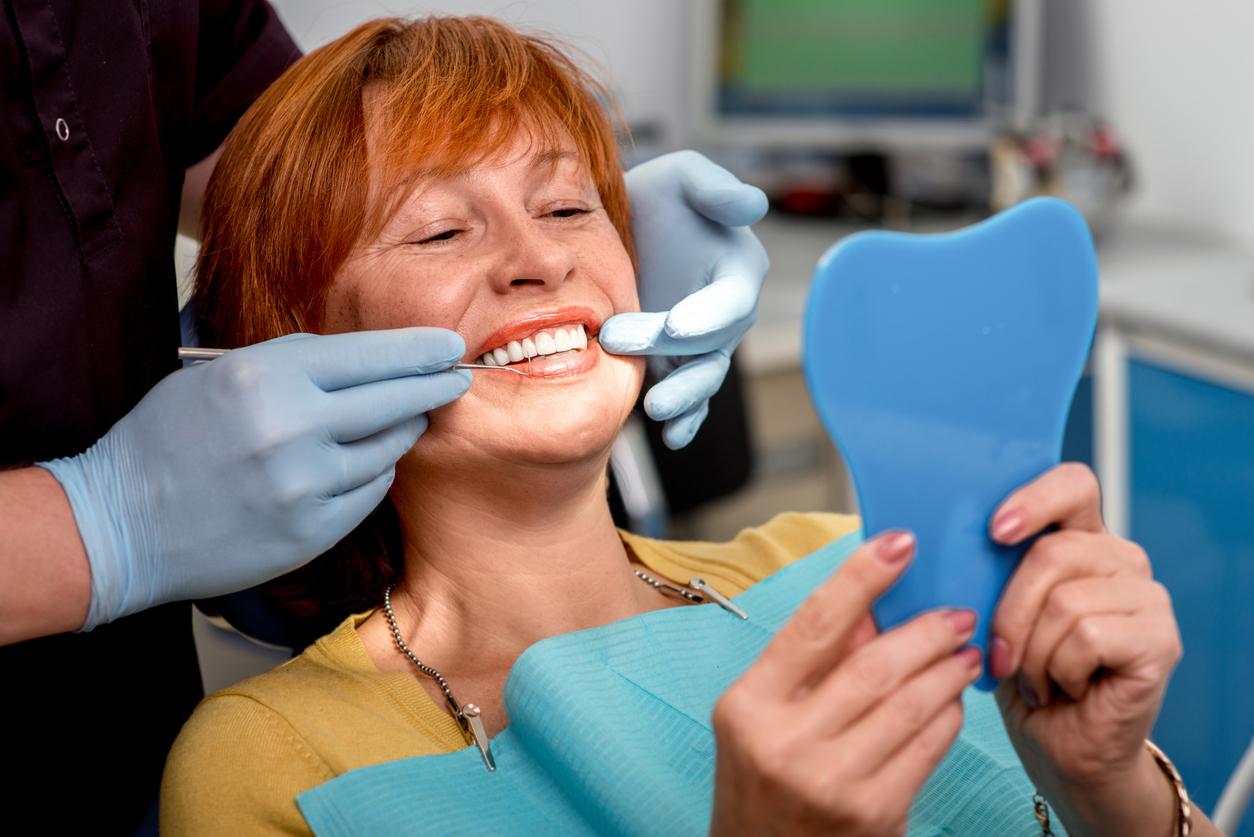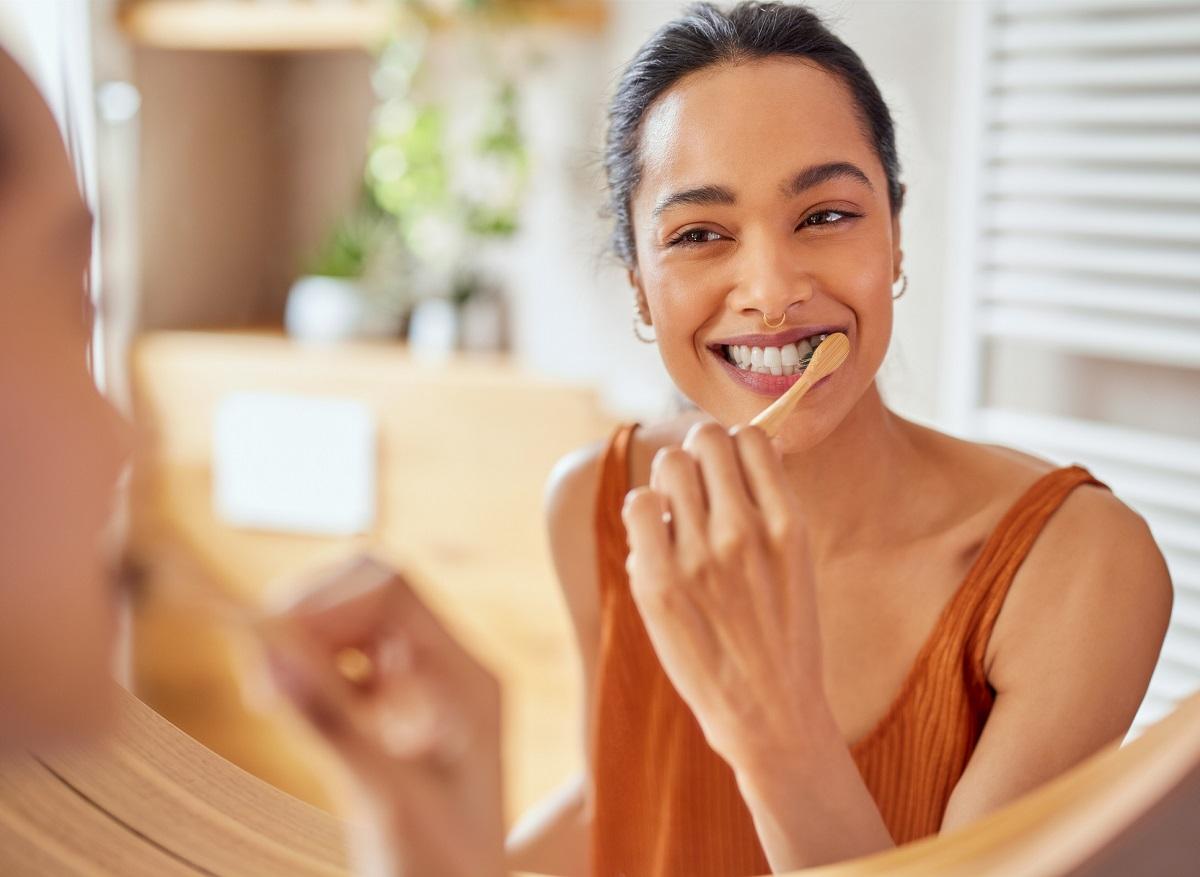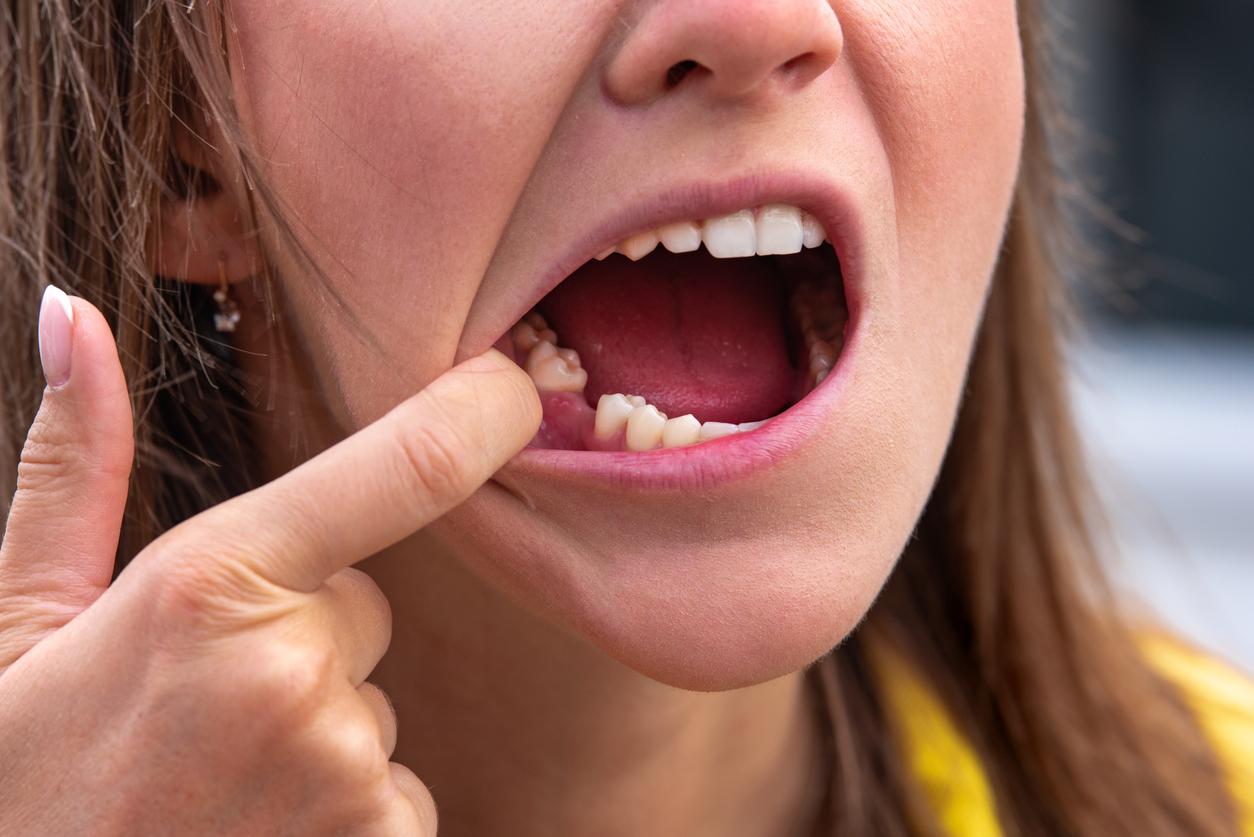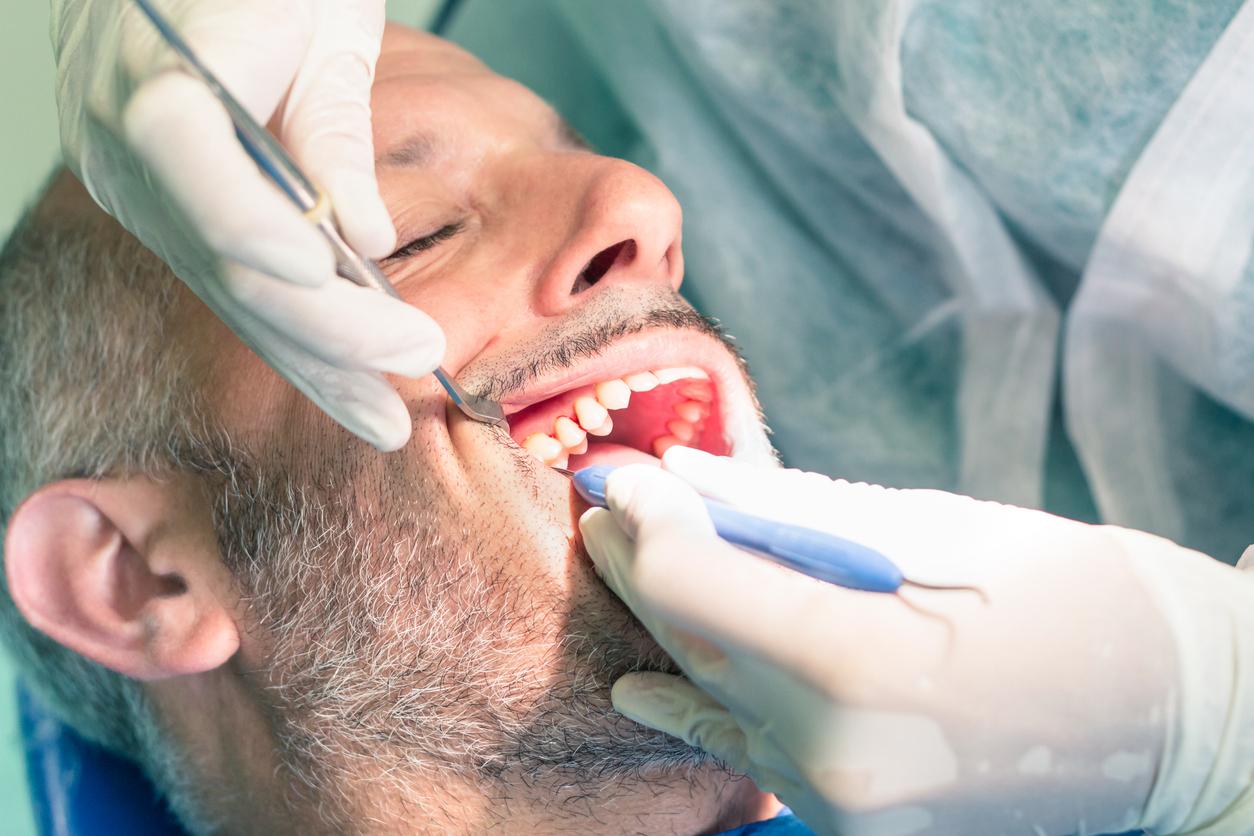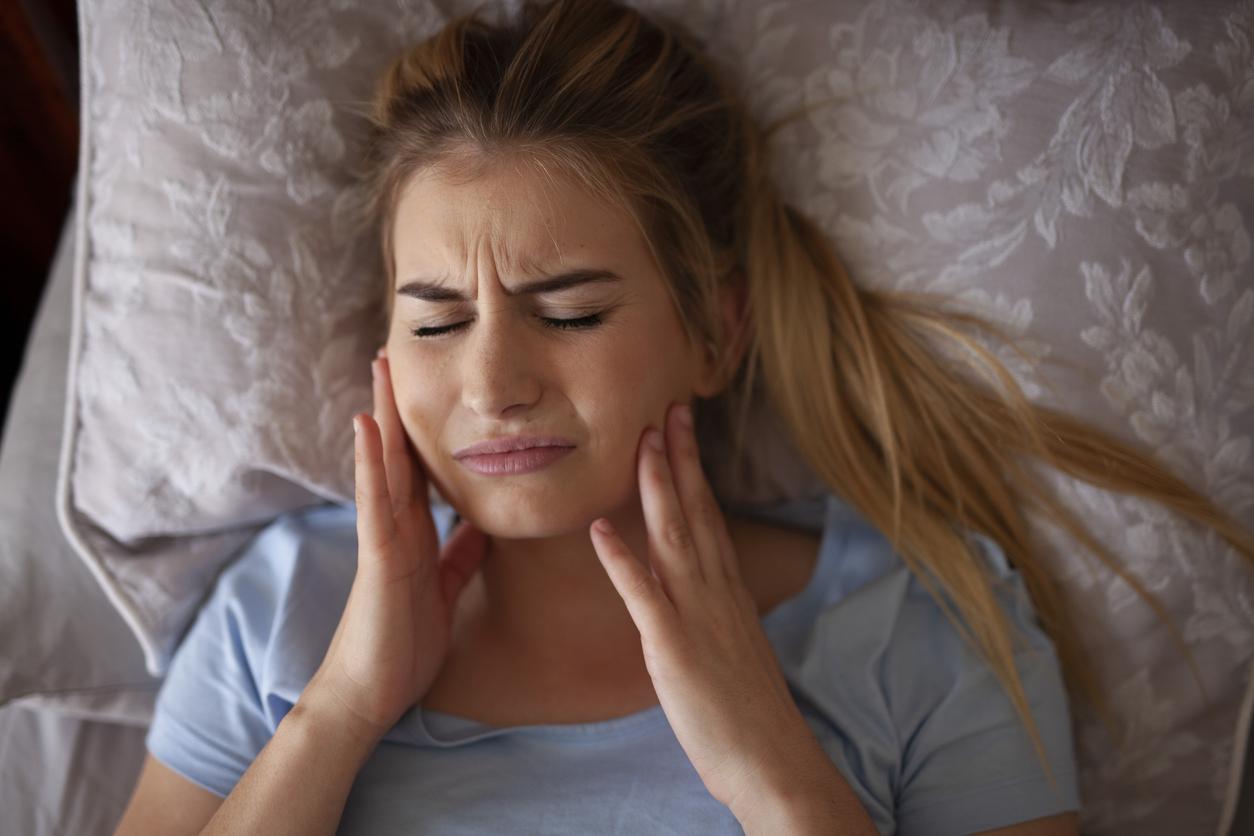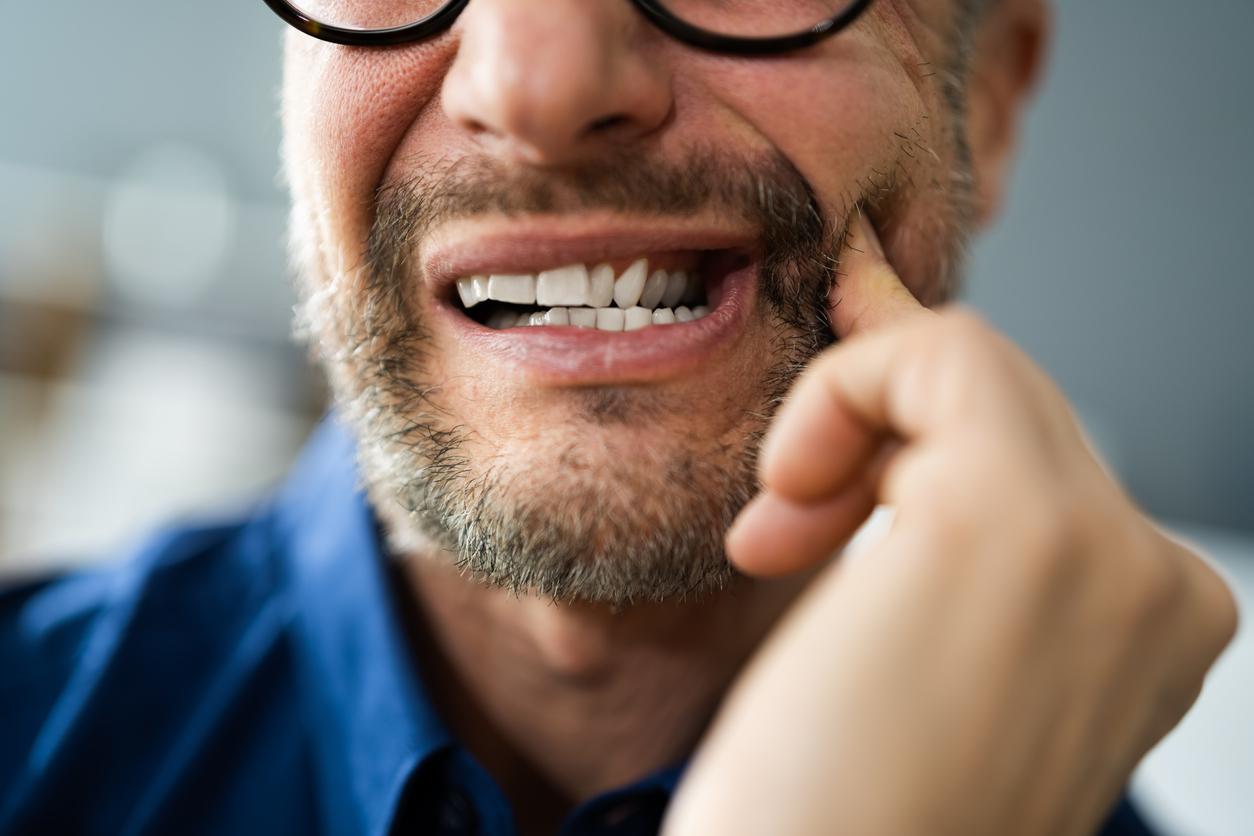Red wine can leave unsightly marks on the teeth because of the pigments and tannins it contains. But there are some tips to limit the damage.

- Red wine can leave stains on your teeth.
- This is linked to the tannins and pigments it contains but also to its acidity.
- Several tips allow you to limit stains.
Who says end-of-year celebrations, often says toasting! Red wine is one of the alcohols widely consumed during this period. But this can cause some inconvenience, including discoloration of the teeth. After a drink, they take on a purplish tint and traces may appear. A dentist from theRutgers University of America gives some tips to limit the risk of stains.
Why does red wine leave marks on teeth?
But why does your smile take on this purplish color? Uchenna Akosa, director of academic practice at the Rutgers School of Dental Medicine, answers this question in a article of its establishment. “When you drink red wine, you face a triple threat to the whiteness of your teeth: anthocyanins which are the grape pigments that give red wine its color, tannins which help bind the pigment to your teeth, and “acidity of the wine which etches your enamel, makes the enamel more porous and allows the stain to stick more easily”explains the expert.
Thus, the more fragile the enamel is and the more abundant the dental plaques, the more numerous the stains will be.
Red wine: anticipate to avoid stains on your teeth
According to this specialist, you have to know how to anticipate to avoid them. She recommends brushing your teeth 30 minutes before drinking wine. “But not right after, because the toothpaste can cause more scratches in the enamel.”, she warns. You should also avoid drinking white wine before red wine, because it contains more acid, which will exacerbate the stains. Furthermore, she advises rinsing your mouth after drinking, because it “helps reduce the acidity of wine and stimulates saliva flow, which is essential for fighting harmful bacteria and maintaining the ideal pH in your mouth.”. Anything that increases saliva production will be beneficial, such as chewing your food well for example. “Cheese is ideal to accompany wine, as it stimulates saliva production and reduces the acidity of the wine.”she adds.
Red wine stain on teeth: the right actions to take when brushing
After the meal, it is also recommended to follow certain rules to limit the effects of wine on oral health. This starts with brushing your teeth well with a soft toothbrush, or even an extra-soft toothbrush if you suffer from gum pain. “Place the toothbrush at a 45 degree angle to the gums and gently brush back and forth in short strokesexplains the American dentist. You should brush the outside, inside and chewing surfaces of your teeth.“On the other hand, she advises against so-called whitening toothpastes, which can be bad for the health of your smile.”Be careful of products that contain ingredients like charcoal or sodium bicarbonate (baking soda)“, she warns.
Before bed, Uchenna Akosa recommends using a water flosser or floss to remove particles stuck between teeth. According to her, scaling and cleaning at the dentist must be carried out regularly to eliminate dental plaque, which can contribute to the appearance of cavities.
Dental hygiene: “Anything that can stain a shirt can stain your teeth”
While red wine creates stains immediately after consumption, it is not the only product that damages teeth. “Anything that can stain a shirt can stain your teeth, such as black coffee, black tea, berries, balsamic vinegar, chocolates, candy and tobaccoshe warns. Beverages like soda and juice damage enamel and make teeth more susceptible to stains.”










